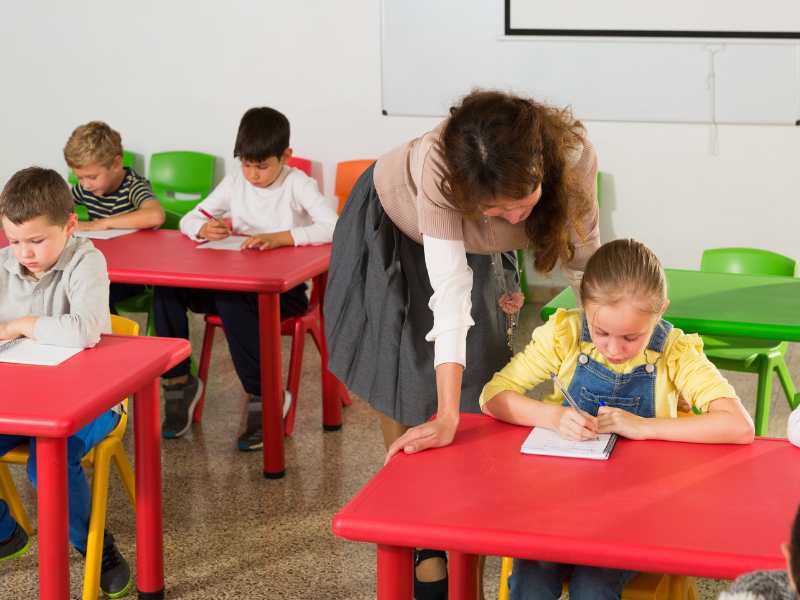
The Georgia Promise Scholarship (SB 233): Questions and Answers

The Georgia Promise Scholarship (SB 233): Questions and Answers
Key Points
- The Georgia Promise Scholarship is the state’s newest program that empowers parents to access the best education for their child. It creates state-funded scholarships that give eligible families $6,500 per student for each school year.
- Eligibility is limited to students zoned for low-performing public schools and meet certain other criteria.
- Applications will be open for families from June 1-30, 2025. Sign up here to be notified of application deadlines and tips.
Starting in the 2025-2026 school year, this program will give eligible families up to $6,500 per year to access the education opportunity best suited to their child’s needs.
What is the Georgia Promise Scholarship?
It’s an education choice program that gives families financial support to access education opportunities outside of the public school system. Families can receive up to $6,500 per year for approved education expenses. This type of program is also known as an education savings account.

Don’t miss an opportunity to get up to $6,500 towards your child’s education.
Applications open June 1. Sign up to be notified!
How will the Georgia Promise Scholarship work?
The state sets aside the scholarship amount into an account that the parent can direct. Parents can use these funds to choose the education environment that supports their child’s unique learning needs.
When does the Promise Scholarship program open?
The program officially launched in March 2025. There will be four application cycles for families this year:
- March 1 – April 15, 2025
- June 1 – June 30, 2025
- September 1 – September 30, 2025
- December 1, 2025 – January 31, 2026
Families accepted into the program will receive funding for the 2025-2026 school year. See more details here.
What can Georgia families use Promise Scholarships for?
Funds can be used for a variety of educational expenses, giving families flexibility to choose the best education for their child’s needs. Approved expenses include:
- Private school tuition and fees
- Tutoring services
- Textbooks and curriculum
- Education therapies
- Education-related technology
- Transportation costs
Who can apply for a Promise Scholarship?
To be eligible, families and students must meet the following criteria:
- Parents must have lived in Georgia for at least one year, with exceptions for active-duty military families.
- The student must be zoned for an eligible public school. See the list of eligible public schools here.
- The student must have been enrolled in a Georgia public school for two consecutive semesters, or is a rising kindergarten student.
- The student cannot be enrolled in a local school system, charter school, or state charter school while participating in the scholarship program.
The program prioritizes lower-income Georgia families. If applications exceed available slots, priority goes to families with household incomes below 400% of the Federal Poverty Level (roughly $120,000 for a family of four).
Parents must agree to use the accounts only for qualifying educational expenses. Once eligible, a child remains eligible through 12th grade.
How is the Promise Scholarship amount determined?
Amounts are set at $6,500, which is approximately the average per-pupil amount that the state sends to local school districts, based on Georgia’s current student funding formula.
When it comes to education, parents know best what their children need.
Georgia’s Promise Scholarship can open up a world of opportunity.
Why does Georgia need Promise Scholarships?
1. Many parents are frustrated with a one-size-fits-all approach. Parents know better than anyone that children are unique and that a one-size-fits-all education approach doesn’t work for most kids. Parents’ desire for choices and flexibility has only grown since the pandemic. Georgia’s Promise Scholarship gives parents financial support to access other education opportunities when the local public school is not the best fit.
2. Thousands of Georgia students are struggling in low-performing public schools. Around 43% of Georgia public schools receive a D or F grade based on the 2023 College and Career Ready Performance Index. For families seeking alternatives, Promise Scholarships are an opportunity to access other school options, including ones that may not be available or affordable otherwise.
3. Budgets and academic outcomes improve for public schools. States with robust education choice programs see better outcomes for all students, including those in the public school system. Education savings account programs, in particular, have a track record of empowering public schools to improve their budgets and increase student achievement.
Are Promise Scholarships the same thing as school vouchers?
No, they are two different types of programs. School vouchers allow parents to use public education dollars for private school tuition only. The Promise Scholarship can be used for a wider range of education expenses, offering families more flexibility.
Are Promise Scholarships the same thing as 529 plans?
No. With a 529 plan, the parents are responsible for contributing money to the account in order to save for their child’s education expenses. Promise Scholarships would be state-funded and would not require parents to contribute any of their own money. Parents can choose to use a Promise Scholarship Account for education savings, such as saving for college tuition, but the account doesn’t have the same tax benefits that 529 plans do.
Do other states have programs like Georgia’s Promise Scholarship?
Yes, 17 states have adopted some form of an education savings account program, including all of Georgia’s immediate neighbors.
- Alabama passed the CHOOSE Act, which gives parents $7,000 per student to use for the education option of their choice.
- Florida expanded its program to universal school choice.
- In a 2023 bipartisan effort, North Carolina opened its ESA program to all its students, putting it on track to be the nation’s second largest after Florida.
- South Carolina has adopted nearly universal education opportunity.
- In early 2025, Tennessee expanded its Education Freedom Scholarship program to be open to K-12 student who wants to apply.
All of Georgia’s neighboring states are moving their ESA programs to a universal eligibility set-up, where every kid has access regardless of income, race, zip code, or other circumstance. Georgia will need to be open to this model if we want to keep up and give our kids the best possible opportunities at school and in life.
Will Promise Scholarships take money away from Georgia’s public schools?
No, the Promise Scholarship is funded separately from the money allocated to public schools.
Will Promise Scholarships help low-income families?
Yes. Programs like the Promise Scholarship are one of the most equitable education opportunities out there. They give low-income families more opportunity to access schooling options that are often only available to families with greater financial resources.
Georgia’s Promise Scholarship is set up to give lower-income families priority if applications exceed the number of slots available.
Will the Promise Scholarship Act (SB 233) hurt homeschooling families?
No. There are no provisions in the proposed law that would prevent homeschooling families from continuing down that education path.
In fact, Georgia’s Promise Scholarship could make homeschooling an even more feasible option. Eligible families could use the funds to pay for curriculum, courses, tutoring, or other education resources needed to homeschool.
Resources for Families
Promise Scholarship Family Handbook
Promise Scholarship Family Information Sheet
List of Eligible Public Schools
Use the Promise Scholarship to homeschool, if you want
Resources for Schools & Service Providers
The Georgia Promise Scholarship: What Private Schools Need to Know
Georgia Promise Scholarship in the News
Georgia Students Need More Schooling Choices (Atlanta Journal-Constitution)
Governor’s Signature on School Choice Bill Is Good First Step (Atlanta Journal-Constitution)
Georgia Governor Signs Bill to Launch ‘Promise Scholarships’ (Washington Examiner)
Promise Scholarships Offer True Accountability (The Brunswick News)










